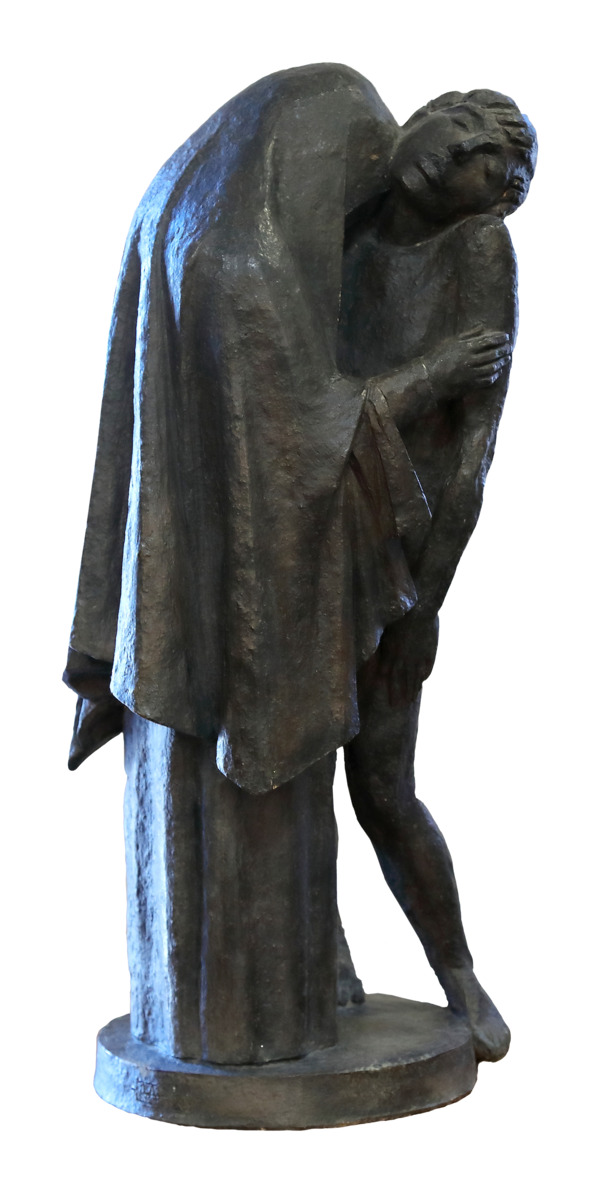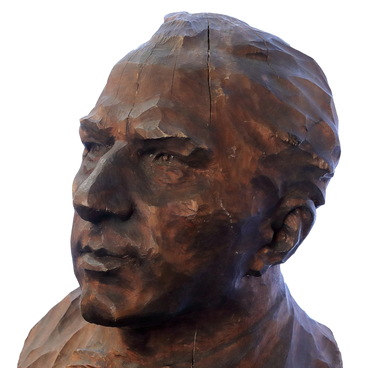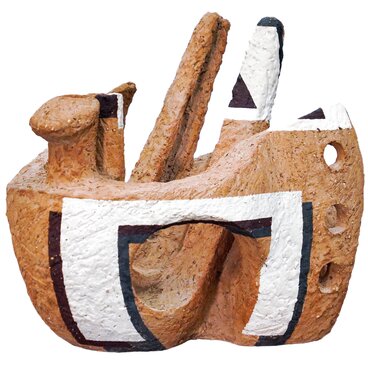Biblical stories occupied an important place in the works of the Ural artist Andrey Antonov. One of the most significant, tragic, and touching Christian stories is embodied in his composition “Pietà”. It was created in 1989 using tinted chamotte made of a special clay blend.
Pietà is the name of the scene of mourning of Christ. This motif was popular both in Gothic art and during Renaissance, and also found its way into late Western art.
The most famous Pietà sculptures belong to Michelangelo Buonarroti, the great Italian master of the High Renaissance. They include the “The Deposition” (also known as “Bandini Pietà” or “The Lamentation over the Dead Christ”), “Rondanini Pietà”, and the most famous “Pietà” which is kept in St. Peter’s Basilica, Vatican City.
Michelangelo’s works are different from each other. In the marble composition from the Vatican, the sculptor adhered to the horizontal iconography, where the body of the Savior is depicted lying on the lap of the Mother of God.
“The Deposition” is more complex and consists of four figures, their various poses combine both vertical and horizontal lines. The dead body of Christ is supported by the hands of the Virgin Mary, Mary Magdalene, and Nicodemus.
“Rondanini Pietà” remained unfinished, its dynamic is mostly vertical.
In his “Pietà”, Andrey Antonov used an unconventional composition: he depicted Jesus and Mary standing. At the same time, Christ has practically no support with his knees helplessly half-bent and his arms hanging limply. Mary effortlessly holds on to her son by his back and as if seeking consolation herself nestles her head against his shoulder.
Antonov deliberately violated the laws of physics: it is highly improbable that a woman can hold a heavy dead body in such a way. The artist’s intention was to show the transformation of the great motherly love into physical efforts. He created his unique version of “Pietà” while adhering to traditional realistic forms and found his own means of expression and techniques to embody a popular plot of world culture in a sculpture.
Pietà is the name of the scene of mourning of Christ. This motif was popular both in Gothic art and during Renaissance, and also found its way into late Western art.
The most famous Pietà sculptures belong to Michelangelo Buonarroti, the great Italian master of the High Renaissance. They include the “The Deposition” (also known as “Bandini Pietà” or “The Lamentation over the Dead Christ”), “Rondanini Pietà”, and the most famous “Pietà” which is kept in St. Peter’s Basilica, Vatican City.
Michelangelo’s works are different from each other. In the marble composition from the Vatican, the sculptor adhered to the horizontal iconography, where the body of the Savior is depicted lying on the lap of the Mother of God.
“The Deposition” is more complex and consists of four figures, their various poses combine both vertical and horizontal lines. The dead body of Christ is supported by the hands of the Virgin Mary, Mary Magdalene, and Nicodemus.
“Rondanini Pietà” remained unfinished, its dynamic is mostly vertical.
In his “Pietà”, Andrey Antonov used an unconventional composition: he depicted Jesus and Mary standing. At the same time, Christ has practically no support with his knees helplessly half-bent and his arms hanging limply. Mary effortlessly holds on to her son by his back and as if seeking consolation herself nestles her head against his shoulder.
Antonov deliberately violated the laws of physics: it is highly improbable that a woman can hold a heavy dead body in such a way. The artist’s intention was to show the transformation of the great motherly love into physical efforts. He created his unique version of “Pietà” while adhering to traditional realistic forms and found his own means of expression and techniques to embody a popular plot of world culture in a sculpture.




